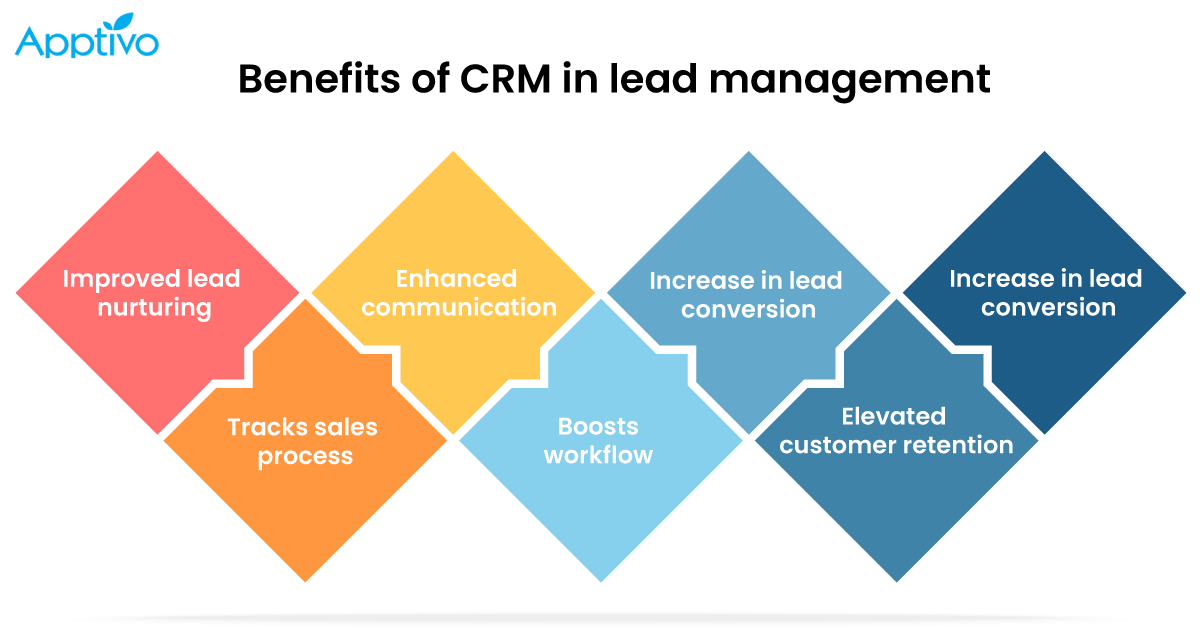
Ready to take your lead management and sales conversion to the next level? Look no further! In today’s fast-paced business world, integrating Customer Relationship Management (CRM) and Sales Systems has become a game-changer for businesses looking to boost their efficiency and skyrocket their sales. So, what exactly does this integration entail and how can it revolutionize your lead management and sales conversion? Let’s dive in and find out!
Imagine having a seamless system that allows you to effortlessly track and nurture your leads from the moment they enter your sales pipeline until they become loyal customers. Integrating CRM and Sales Systems allows you to do just that! By combining the power of CRM, which focuses on building and maintaining customer relationships, with Sales Systems, which streamline the sales process, you create a dynamic duo that can work wonders for your business.
With this integration, you’ll have access to a wealth of valuable insights, from customer preferences and purchase history to communication records and follow-up reminders. This wealth of information empowers your sales team to personalize their interactions, deliver targeted sales pitches, and provide exceptional customer experiences. By leveraging the power of CRM and Sales Systems, you’ll not only improve your lead management but also increase your sales conversion rates, ultimately driving your business towards greater success.

So, buckle up and get ready to witness the transformative power of integrating CRM and Sales Systems! In the following sections, we’ll delve deeper into the benefits, strategies, and best practices to make the most out of this game-changing integration. Get ready to revolutionize your lead management and sales conversion like never before!

Integrating Customer Relationship Management (CRM) and Sales Systems for Improved Lead Management and Sales Conversion
Integrating customer relationship management (CRM) and sales systems is crucial for businesses looking to improve their lead management and sales conversion rates. CRM systems are designed to help companies effectively manage and analyze customer interactions and data, while sales systems are focused on streamlining the sales process and increasing revenue. By integrating these two systems, businesses can create a seamless flow of information and improve their overall sales performance.
CRM systems provide businesses with valuable insights into customer behavior, preferences, and purchase history. This data can be used to identify potential leads, personalize marketing efforts, and improve customer retention. However, without proper integration with the sales system, this valuable information may not be fully utilized.
The Benefits of Integrating CRM and Sales Systems
1. Streamlined Lead Management: When CRM and sales systems are integrated, lead management becomes more efficient. Leads generated through marketing efforts can be automatically transferred to the sales system, eliminating the need for manual data entry or the risk of leads slipping through the cracks. This ensures that all leads are promptly followed up on and increases the chances of converting them into paying customers.
2. Improved Sales Conversion: By integrating CRM and sales systems, sales teams have access to comprehensive customer data, allowing them to better understand their prospects and tailor their sales approach accordingly. This personalization can significantly improve sales conversion rates as sales reps can address customer pain points, provide relevant solutions, and build stronger relationships.
How to Integrate CRM and Sales Systems
1. Choose the Right CRM and Sales Systems: Before integration, businesses must select CRM and sales systems that are compatible and meet their specific needs. It’s important to consider factors such as scalability, ease of use, and integration capabilities when making this decision.
2. Establish Data Mapping: Data mapping involves determining how information will flow between the CRM and sales systems. This includes identifying which fields in the CRM system correspond to fields in the sales system. Proper data mapping ensures that information is accurately synced and eliminates any discrepancies.
3. Implement Integration Tools: Integration tools or platforms can simplify the process of connecting CRM and sales systems. These tools typically provide pre-built connectors and workflows that automate data transfer and synchronization. Some popular integration tools include Zapier, PieSync, and Workato.
4. Train Employees: Once integration is complete, it’s essential to provide thorough training to employees who will be using the integrated systems. This ensures that they understand how to navigate the new processes, input data correctly, and take full advantage of the integrated features.
Best Practices for Integrating CRM and Sales Systems
1. Define Clear Goals and Objectives: Before beginning the integration process, businesses should establish clear goals and objectives for the integration. This helps to ensure that the integration is aligned with the company’s overall sales and marketing strategy.
2. Regularly Monitor and Analyze Data: Integration provides businesses with a wealth of data. It’s important to regularly monitor and analyze this data to identify trends, patterns, and areas for improvement. By leveraging the insights gained from data analysis, businesses can make data-driven decisions and optimize their sales and marketing efforts.
3. Continuously Train and Educate Employees: Technology and business processes are constantly evolving. To fully leverage the benefits of integrating CRM and sales systems, businesses should invest in continuous training and education for their employees. This ensures that employees are up to date with the latest features and best practices, maximizing the value of the integrated systems.
4. Foster Collaboration between Sales and Marketing Teams: Integration of CRM and sales systems creates an opportunity for collaboration between sales and marketing teams. By sharing insights and aligning their efforts, these teams can work together to generate better leads, nurture prospects, and close deals more effectively.
Conclusion
Integrating customer relationship management (CRM) and sales systems is a strategic move for businesses looking to improve their lead management and sales conversion rates. By streamlining lead management, personalizing sales efforts, and leveraging comprehensive customer data, businesses can enhance their overall sales performance. However, successful integration requires careful planning, proper implementation, and ongoing monitoring and training. By following best practices and staying committed to continuous improvement, businesses can optimize the benefits of CRM and sales system integration and drive sustainable growth.

Key Takeaways
- Integrating CRM and sales systems can help businesses effectively manage leads and improve sales conversion rates.
- By combining customer relationship management (CRM) software with sales systems, businesses can have a centralized database for customer information and sales data.
- This integration allows for better lead management, as sales teams have access to comprehensive customer profiles, purchase history, and communication records.
- With CRM and sales systems working together, businesses can track and analyze customer interactions, identify sales opportunities, and personalize their sales approach.
- Improved lead management and sales conversion through CRM and sales system integration can result in higher customer satisfaction, increased revenue, and better overall business performance.
Frequently Asked Questions
1. What are the benefits of integrating CRM and sales systems?
Integrating Customer Relationship Management (CRM) and sales systems brings numerous benefits to businesses. Firstly, it allows for improved lead management by providing a centralized platform to track and manage leads throughout the sales process. This streamlines lead nurturing and ensures that no opportunities slip through the cracks.
Secondly, integration enhances sales conversion rates. By aligning CRM and sales systems, sales teams can access real-time customer data, enabling them to personalize interactions and tailor their sales approach according to individual needs. This personalized approach significantly improves the chances of converting leads into paying customers.
2. How does CRM integration improve lead management?
CRM integration plays a vital role in improving lead management. By integrating CRM with sales systems, businesses can capture and store lead information in a centralized database. This allows for a more organized and efficient lead management process, as all relevant data, such as contact details, preferences, and interactions, can be easily accessed and tracked.
Furthermore, CRM integration enables businesses to automate lead nurturing activities. Through automated workflows and personalized communication, leads can be nurtured at each stage of the sales funnel, increasing the likelihood of conversion. Overall, CRM integration streamlines lead management by providing a comprehensive and efficient system to track, nurture, and convert leads.
3. What challenges may arise when integrating CRM and sales systems?
Although integrating CRM and sales systems offers numerous benefits, there can be challenges during the implementation process. One common challenge is data compatibility. Ensuring that data from both systems can seamlessly integrate and align with each other requires careful planning and configuration.
Another challenge is user adoption. It is essential to provide proper training and support to employees to ensure they understand the new integrated system and its benefits. Resistance to change or lack of understanding can hinder the successful implementation of CRM and sales system integration.
4. How can businesses ensure successful integration of CRM and sales systems?
To ensure successful integration of CRM and sales systems, businesses should follow a few key steps. Firstly, they should clearly define their goals and objectives for integration. Understanding the desired outcomes will help guide the integration process and ensure that the systems are aligned to meet specific business needs.
Secondly, thorough planning and communication are crucial. This involves mapping out the integration process, identifying potential challenges, and communicating the benefits to all stakeholders involved. Additionally, businesses should invest in proper training and support for employees to ensure smooth adoption and effective utilization of the integrated system.
5. Can CRM and sales system integration be customized to fit specific business requirements?
Yes, CRM and sales system integration can be customized to fit specific business requirements. Each business has unique processes and workflows, and the integration should be tailored to align with these requirements. Customization can involve mapping specific data fields, automating workflows, and creating personalized dashboards and reports.
By customizing the integration, businesses can optimize the efficiency and effectiveness of their CRM and sales systems. This allows them to fully leverage the benefits of integration and maximize their sales and lead management capabilities.
Final Thoughts
In today’s competitive business landscape, effective lead management and sales conversion are crucial for the success of any organization. Integrating Customer Relationship Management (CRM) and Sales Systems has emerged as a powerful strategy to streamline these processes and drive better results. By harnessing the power of technology and data, businesses can enhance their customer relationships, boost sales efficiency, and ultimately achieve higher revenue.
The integration of CRM and Sales Systems allows for seamless data sharing and collaboration between sales and marketing teams. This ensures that all customer interactions and touchpoints are tracked and analyzed, providing valuable insights into customer behavior and preferences. With this information at their fingertips, sales representatives can personalize their approach, nurturing leads and guiding them through the sales funnel with precision and relevance. By understanding the needs and pain points of their prospects, sales teams can tailor their messaging and offer solutions that resonate, leading to higher conversion rates and customer satisfaction.
Additionally, integrating CRM and Sales Systems enables businesses to automate repetitive tasks, freeing up valuable time for sales professionals to focus on building relationships and closing deals. With automated lead scoring and nurturing, sales teams can prioritize their efforts and focus on the most promising opportunities, maximizing their productivity and efficiency. Furthermore, automation allows for real-time data updates, ensuring that all team members have access to the latest information, promoting collaboration and preventing duplication of efforts.
In conclusion, the integration of Customer Relationship Management (CRM) and Sales Systems is a game-changer for lead management and sales conversion. It empowers businesses to leverage technology and data to optimize their sales processes, enhance customer relationships, and achieve better results. By implementing this integration, organizations can stay ahead of the competition, drive revenue growth, and deliver exceptional customer experiences. So, don’t miss out on this opportunity to revolutionize your sales strategy and take your business to new heights.




